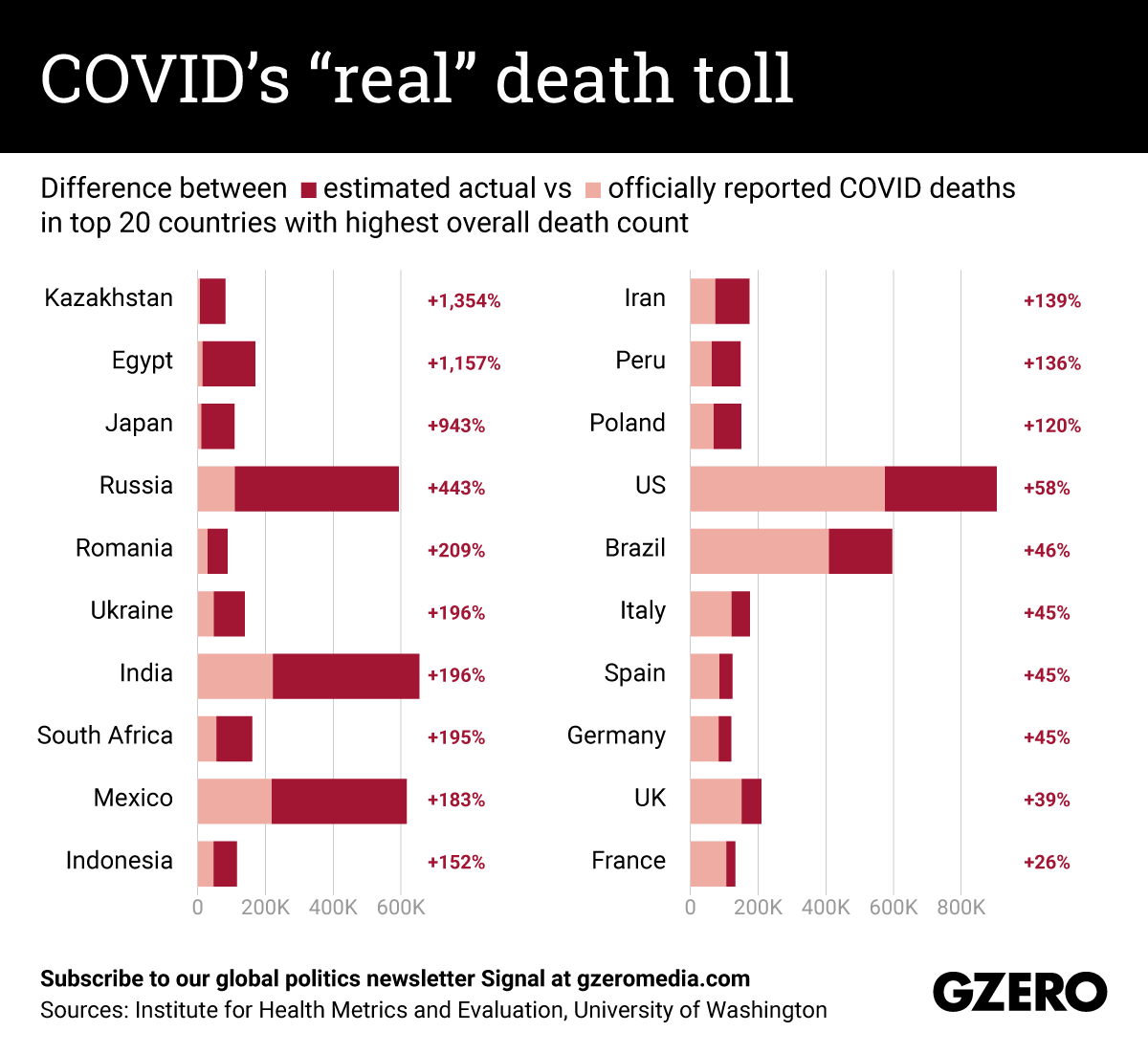Ari Winkleman
COVID has officially killed almost 3.5 million people around the world since the beginning of the pandemic. But some public health experts believe that the real number could be more than twice as high, because of challenges to accurately reporting the death toll in many countries around the world. A new study from the University of Washington contends, for example, that actual deaths are nearly 60 percent higher than reported in the US, almost triple as high in India, more than five time as high in Russia... and a staggering ten times higher than the official tally in Japan. Here's a look at how official figures compare to actual estimated deaths in the 20 countries where COVID has claimed the most lives.
